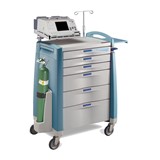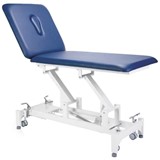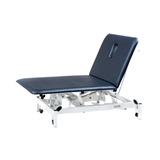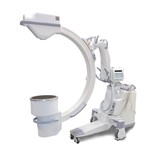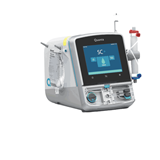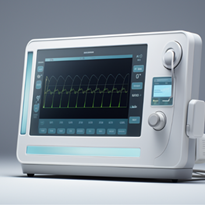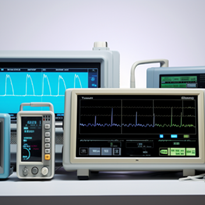In modern healthcare, patient monitoring technology plays a pivotal role in continuously tracking and assessing the health status of individuals. By providing real-time data and critical insights, patient monitors assist healthcare professionals in making informed decisions and delivering personalized care. This pillar post explores the latest innovations and future trends in patient monitoring technology, highlighting its profound impact on advancing healthcare outcomes.
1. Smart Patient Monitors with Integrated Decision Support Systems
A.Understanding the Role of Decision Support Systems in Patient Monitoring
Patient monitoring has evolved significantly over the years, transitioning from manual recording to sophisticated automated systems. One of the most notable advancements is the integration of decision support systems (DSS) into smart patient monitors. Decision support systems utilize artificial intelligence algorithms to analyze patient data and provide evidence-based recommendations to healthcare providers. By amalgamating patient data, medical knowledge, and decision rules, these systems assist clinicians in interpreting complex information and making accurate diagnoses.
B. Benefits of Smart Patient Monitors with Decision Support Systems
The integration of decision support systems in smart patient monitors offers a myriad of benefits to both healthcare professionals and patients. Firstly, it enhances the speed and accuracy of diagnosis, enabling timely intervention and treatment planning. Secondly, DSS-enabled patient monitors can help in reducing medical errors and adverse events by flagging potential issues and suggesting appropriate actions. Moreover, these systems contribute to standardized care practices and assist less experienced clinicians by offering insights based on best practices and latest medical research.
C.Considerations and Limitations of Integrated Decision Support Systems
While smart patient monitors with integrated decision support systems are a leap forward in healthcare technology, certain considerations and limitations must be acknowledged. Healthcare providers must strike a balance between relying on AI-driven recommendations and their clinical judgment to ensure patient safety. The accuracy and reliability of AI algorithms heavily depend on the quality and diversity of data used for training, which necessitates a robust data governance framework. Furthermore, ethical concerns related to patient data privacy and transparency in AI decision-making need to be addressed to foster trust in these advanced systems.
2. AI-Driven Algorithms for Early Detection of Critical Events
A. How AI is Revolutionizing Patient Monitoring
Artificial intelligence has ushered in a new era of patient monitoring by leveraging machine learning algorithms to recognize patterns and anomalies in patient data. AI-driven algorithms can process vast amounts of data from multiple sources, including vital signs, lab results, and patient history, to detect subtle changes that may indicate potential critical events. This proactive approach to patient monitoring enables healthcare providers to intervene early, preventing deterioration and improving patient outcomes.
B. Early Detection of Critical Events and Its Impact on Healthcare Outcomes
The early detection of critical events through AI-driven algorithms holds immense potential in transforming healthcare outcomes. By identifying warning signs before they escalate into emergencies, healthcare providers can implement timely interventions, potentially reducing hospital readmissions and shortening recovery times. This not only improves patient well-being but also optimizes healthcare resource utilization and reduces the overall cost of care.
C. Ethical and Privacy Concerns in Implementing AI-Driven Algorithms
As healthcare institutions embrace AI-driven algorithms for patient monitoring, ethical considerations surrounding data usage and patient privacy become paramount. Safeguarding patient data from breaches and unauthorized access is crucial in maintaining patient trust. Transparent communication with patients about the implementation of AI technology, including its potential benefits and limitations, is essential for informed consent and building a positive doctor-patient relationship. Additionally, healthcare professionals should be well-versed in the use of AI tools to ensure responsible and ethical decision-making throughout the patient care journey.
3. Wireless and Wearable Patient Monitoring Solutions
A. Overview of Wireless Technology in Patient Monitoring
Wireless technology has emerged as a transformative force in the realm of patient monitoring, revolutionizing how healthcare professionals track and manage patient health. Unlike traditional wired monitoring systems, wireless patient monitoring solutions offer increased flexibility, mobility, and ease of use. In this section, we will provide a comprehensive overview of wireless technology in patient monitoring, highlighting its essential features, functionalities, and potential benefits for both patients and healthcare providers.
-
The Essence of Wireless Patient Monitoring
- Definition of wireless patient monitoring and its scope in healthcare settings
- Understanding the communication protocols used in wireless monitoring devices
-
Advantages of Wireless Patient Monitoring
- Enhanced Mobility: How wireless solutions enable patients to move freely during monitoring
- Reduced Discomfort: Eliminating the constraints of wired connections for patient comfort
- Minimized Risk of Infections: Wireless devices reduce the risk of infection transmission
- Simplified Installation: The ease of setting up wireless patient monitoring systems
-
Types of Wireless Patient Monitoring Devices
- Wireless Vital Sign Monitors: Tracking key physiological parameters without cables
- Wearable Health Trackers: Monitoring devices integrated into wearable accessories
- Implantable Devices: Wireless solutions embedded within the patient's body
B. Advantages of Wearable Patient Monitors for Patients and Healthcare Providers
Wearable patient monitors have garnered significant attention in recent years due to their potential to revolutionize healthcare by providing real-time data and insights. These unobtrusive, user-friendly devices allow patients to stay engaged in their daily activities while continuously monitoring their health. At the same time, healthcare providers can access valuable patient data remotely, enabling proactive interventions and personalized care. In this section, we will delve into the advantages of wearable patient monitors for both patients and healthcare providers.
-
Empowering Patients with Continuous Monitoring
- Uninterrupted Health Insights: How wearables provide a continuous stream of health data
- Encouraging Patient Engagement: Empowering patients to actively manage their well-being
- Health Trends Analysis: Identifying patterns and trends in long-term health data
- Facilitating Remote Patient Management
- Remote Data Access: How healthcare providers can access real-time patient data from afar
- Timely Interventions: Enabling timely medical interventions based on wearable data
- Telemedicine Integration: Integrating wearables into telehealth platforms for comprehensive care
- Supporting Preventive and Personalized Care
- Early Detection of Health Issues: Utilizing wearables for early warning and detection
- Personalized Health Plans: Tailoring treatment plans based on individual patient data
- Health Behavior Insights: Understanding patient behaviors and lifestyle patterns
C. Addressing Security and Connectivity Challenges in Wireless Solutions
While wireless patient monitoring brings a myriad of benefits, it also introduces unique challenges that must be carefully addressed to ensure the safety and privacy of patients' data. Security and connectivity are of paramount importance in wireless solutions to prevent unauthorized access and maintain uninterrupted data transmission. This section will delve into the security measures and connectivity considerations necessary for the successful implementation of wireless patient monitoring systems.
- Data Encryption and Authentication
- Securing Patient Data: Implementing robust encryption techniques for data protection
- Multi-Factor Authentication: Adding layers of security to prevent unauthorized acces
- Ensuring Reliable Connectivity
- Redundancy and Failover Systems: Minimizing the risk of data loss due to connectivity issues
- Network Signal Strength: Optimizing connectivity for seamless data transmission
- Regulatory Compliance and Privacy Standard
- HIPAA and GDPR Compliance: Adhering to data protection regulations in different regions
- Patient Consent and Transparency: Ensuring patients are aware of data usage and storage.
4. Continuous and Remote Patient Monitoring for Improved Care
A. The Significance of Continuous Monitoring in Healthcare Settings
Continuous patient monitoring has emerged as a vital aspect of modern healthcare, revolutionizing the way medical professionals monitor and manage patients' conditions. Unlike traditional periodic check-ups, continuous monitoring involves real-time and uninterrupted observation of a patient's vital signs, allowing healthcare providers to detect changes or abnormalities promptly. This approach proves particularly crucial for patients with critical conditions or those undergoing post-operative care, where timely intervention can be life-saving.
- Enhancing Patient Safety: Continuous monitoring significantly improves patient safety by enabling early detection of deteriorating conditions. By continuously tracking vital parameters such as heart rate, blood pressure, respiratory rate, and oxygen saturation, healthcare providers can swiftly identify any signs of distress or complications. Consequently, timely interventions can be initiated, reducing the likelihood of adverse events.
- Early Warning Systems: Continuous monitoring systems are often equipped with early warning systems that use sophisticated algorithms to analyze patients' data. These systems can automatically generate alerts when deviations from normal ranges are detected. Healthcare teams can then prioritize these alerts, ensuring prompt evaluation and appropriate action.
- Tailored Treatment Plans: The insights gained from continuous monitoring empower healthcare professionals to design personalized treatment plans for each patient. By monitoring how a patient's vital signs respond to different interventions, medical teams can fine-tune treatments to optimize outcomes and speed up recovery.
B. Remote Patient Monitoring: Enhancing Access to Quality Healthcare
Remote patient monitoring (RPM) represents a remarkable advancement in healthcare delivery, especially for patients who face challenges in accessing medical facilities regularly. RPM utilizes technology to monitor patients' health status from a distance, removing geographical barriers and providing continuous care beyond the traditional clinical setting.
- Enabling Home-Based Care: RPM allows patients to receive medical attention in the comfort of their homes, particularly beneficial for individuals with chronic illnesses or mobility limitations. By reducing hospital visits, RPM not only enhances convenience but also reduces the burden on healthcare facilities.
- Early Intervention and Prevention: For patients with chronic conditions, RPM enables early intervention and preventive measures. Regular monitoring of vital signs and symptoms can help detect potential issues before they escalate, leading to better disease management and lower healthcare costs.
- Empowering Patients: RPM empowers patients to actively participate in their healthcare journey. By accessing their health data through RPM platforms, patients gain a deeper understanding of their conditions and can make informed decisions about their lifestyle and treatment choices.
C. Ensuring Data Accuracy and Reliability in Remote Monitoring
While the benefits of remote patient monitoring are significant, ensuring the accuracy and reliability of the collected data is paramount to its success. Technical challenges and potential pitfalls must be addressed to maintain the integrity of the monitoring process.
- Data Security and Privacy: Remote patient monitoring involves the transmission and storage of sensitive health information. Robust security measures must be in place to safeguard patient data from unauthorized access, ensuring compliance with healthcare regulations and protecting patient privacy.
- Device Reliability and Calibration: The accuracy of remote monitoring devices is crucial for making informed clinical decisions. Regular calibration and maintenance of these devices are essential to ensure precise measurements and reliable data.
- Healthcare Provider Oversight: While RPM promotes patient autonomy, healthcare providers must maintain active oversight of the monitoring process. Regular data review and follow-ups with patients are necessary to detect any potential issues and provide timely interventions.
5. Integrating Patient Monitors with Telehealth and Telemedicine
A. The Synergy between Patient Monitoring and Telehealth Services
- Telehealth and its role in modern healthcare
- Definition and significance of patient monitoring in the context of telemedicine
- How patient monitors complement telehealth services
- Enhancing care coordination through integration
B. Benefits of Integrating Patient Monitors with Telemedicine Platforms
In the rapidly evolving world of healthcare, the amalgamation of patient monitors with telemedicine platforms has ushered in a new era of medical care. This integration brings forth a multitude of advantages that significantly impact both healthcare providers and patients alike.
- Improved access to healthcare services, especially in remote areas:
- Telemedicine, through its virtual nature, transcends geographical barriers, making healthcare accessible to individuals residing in remote and underserved regions.
- By incorporating patient monitors into telehealth systems, patients can undergo continuous monitoring without the need to travel long distances to medical facilities.
- Real-time data transmission for prompt medical interventions:
- Patient monitors equipped with telemedicine capabilities can instantaneously transmit vital health data to healthcare providers in real-time.
- This immediate access to critical information empowers medical professionals to make timely and informed decisions, especially in emergency situations.
- Enhanced patient engagement and self-management:
- Integrating patient monitors with telehealth encourages active patient involvement in managing their health conditions.
- Patients can regularly track their vital signs and health metrics, promoting self-awareness and better adherence to treatment plans.
- Reduction in hospital readmissions and healthcare costs:
- The continuous monitoring facilitated by this integration can lead to early detection of health deterioration, potentially preventing readmissions and costly medical interventions.
- Timely interventions based on real-time data can lead to more efficient and cost-effective healthcare outcomes.
- Facilitation of teleconsultations with comprehensive health data:
- With patient monitors integrated into telemedicine platforms, healthcare providers can conduct virtual consultations with access to a comprehensive set of patient data.
- This holistic view of the patient's health status enables more accurate diagnoses and personalized treatment recommendations.
C. Overcoming Technical Barriers and Enhancing User Experience
While the integration of patient monitors with telehealth and telemedicine platforms presents numerous benefits, it also entails certain technical challenges that require careful consideration and resolution.
- Ensuring seamless connectivity between patient monitors and telemedicine systems:
- Seamless data transmission is crucial for real-time monitoring, necessitating reliable connectivity solutions.
- Implementing robust communication protocols and network infrastructure is essential to maintain continuous data flow.
- Compatibility challenges and the need for standardization:
- The healthcare industry employs a wide range of patient monitoring devices from various manufacturers, leading to interoperability challenges.
- Standardizing data formats and communication protocols can facilitate smooth integration across different systems.
- Data security and privacy considerations in telehealth integration:
- As patient health data is transmitted over networks, ensuring data security and privacy becomes paramount.
- Employing encryption, secure authentication mechanisms, and adherence to regulatory standards are crucial to safeguard sensitive patient information.
- User-friendly interfaces for healthcare providers and patients:
- The success of integrated systems relies on intuitive and user-friendly interfaces for healthcare professionals and patients alike.
- User experience (UX) design plays a critical role in ensuring seamless interaction with the technology.
- Training and support to maximize the benefits of integrated systems:
- Adequate training and ongoing support are necessary for healthcare professionals to effectively utilize the integrated patient monitoring and telemedicine systems.
- Educating patients on using the technology and interpreting their health data can optimize the advantages of this integration.
6. Personalized Monitoring Parameters for Individualized Patient Care
A. Moving Towards Personalized Healthcare through Patient Monitoring
- Personalized healthcare is an emerging paradigm that aims to tailor medical treatments and interventions to individual patients' unique needs and characteristics.
- Patient monitoring technology plays a crucial role in enabling personalized healthcare by providing real-time data and insights into patients' conditions.
- Through continuous monitoring of vital signs, symptoms, and other relevant health metrics, healthcare providers can gain a comprehensive understanding of each patient's health status.
- The data collected from patient monitors can be analyzed using advanced algorithms and artificial intelligence (AI) to identify patterns, trends, and potential health risks specific to the individual.
- By moving towards personalized healthcare, medical professionals can offer more precise and targeted interventions, resulting in improved patient outcomes and a higher quality of care.
B. Tailoring Monitoring Parameters to Specific Patient Needs
- Effective personalized patient monitoring requires a careful selection and customization of monitoring parameters based on the patient's medical history, condition, and treatment plan.
- Healthcare providers should consider factors such as age, medical conditions, allergies, medications, and comorbidities when determining the appropriate monitoring parameters.
- For example, an elderly patient with chronic heart disease may require continuous monitoring of heart rate, blood pressure, and oxygen saturation levels, while a diabetic patient may benefit from frequent blood glucose level monitoring.
- By tailoring monitoring parameters to individual patient needs, healthcare professionals can detect potential health issues early on and intervene promptly, preventing complications and hospital readmissions.
C. Ensuring Data Security and Compliance with Personalized Monitoring
- As patient monitoring technology becomes more advanced and data-driven, ensuring the security and privacy of patient information is of utmost importance.
- Healthcare providers must adhere to strict data protection regulations and compliance standards, such as HIPAA (Health Insurance Portability and Accountability Act) in the United States, to safeguard patient data.
- Implementing robust encryption measures, access controls, and secure data storage systems is essential to protect sensitive patient information from unauthorized access or breaches.
- Additionally, healthcare professionals should maintain transparent communication with patients regarding data usage and obtain their informed consent for personalized monitoring.
7. Future Challenges and Opportunities in Patient Monitoring Technology
A. Addressing Regulatory and Legal Considerations
- The rapid advancement of patient monitoring technology presents new challenges related to regulatory frameworks and legal implications.
- Healthcare regulators must adapt and establish clear guidelines for the use of innovative monitoring devices and AI-driven algorithms to ensure patient safety and data integrity.
- Balancing the need for data-driven healthcare with patient privacy rights requires careful consideration and collaboration among policymakers, healthcare providers, and technology developers.
B. Training and Education for Healthcare Professionals
- With the integration of sophisticated patient monitoring technology, healthcare professionals need adequate training to effectively utilize and interpret the data provided by these systems.
- Training programs should cover the operation of monitoring devices, data analysis, and the integration of AI-driven insights into clinical decision-making.
- Continuous education and upskilling initiatives will empower healthcare professionals to embrace technological advancements and optimize patient care.
C. Embracing Interoperability for Seamless Integration
- As patient monitoring technology evolves, it is essential to prioritize interoperability among different devices and healthcare systems.
- Seamless data exchange between monitoring devices, electronic health records (EHRs), and telehealth platforms streamlines healthcare workflows and enhances care coordination.
- Standardizing data formats and communication protocols will enable healthcare providers to access comprehensive patient information, leading to more informed clinical decisions and improved patient outcomes.
In conclusion, the landscape of patient monitoring technology is undergoing a profound transformation, ushering in a new era of healthcare that is data-driven, personalized, and accessible. The integration of decision support systems into smart patient monitors marks a significant leap forward, enhancing diagnostic accuracy and standardizing care practices while demanding a delicate balance between AI-driven insights and clinical judgment. AI-driven algorithms have redefined patient monitoring by enabling early detection of critical events, resulting in improved patient outcomes, reduced hospital readmissions, and ethical considerations surrounding data privacy.

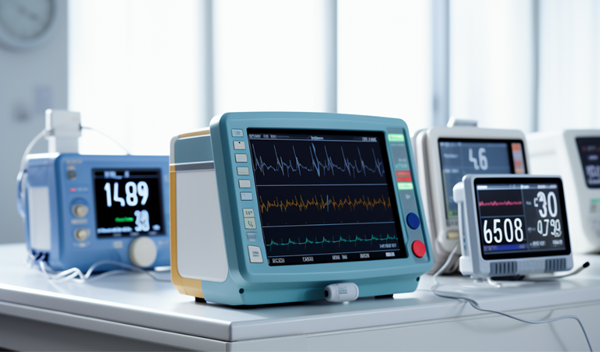
-160x160-state_article-rel-cat.png)
